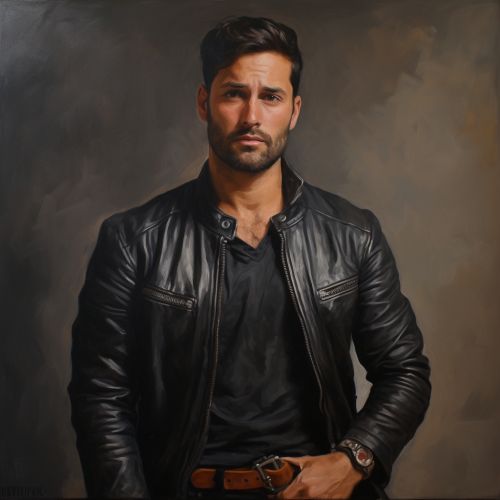Bad boy
Origins of the "Bad Boy" Archetype
The concept of the "bad boy" is a cultural and societal archetype that has existed for centuries. The term "bad boy" is often used to describe a male who deviates from societal norms and expectations, exhibiting behavior that is rebellious, defiant, or non-conformist. This archetype can be traced back to early literature, where characters such as Heathcliff from Emily Bronte's "Wuthering Heights" or Mr. Darcy from Jane Austen's "Pride and Prejudice" embody elements of the bad boy persona.


Psychological Appeal of the "Bad Boy"
The "bad boy" archetype holds a certain psychological appeal for many individuals. According to Evolutionary Psychology, this attraction could be attributed to the perceived strength, independence, and risk-taking behaviors associated with the bad boy persona. These traits, in evolutionary terms, may signal a strong and capable mate. However, it's important to note that this is a generalized theory and does not apply to everyone's individual preferences.
"Bad Boy" in Literature and Media
The "bad boy" archetype is a common trope in literature, film, and television. In these mediums, the bad boy character is often portrayed as a romantic interest, with their rebellious nature and disregard for societal norms serving as a source of conflict and intrigue. Examples of this archetype in literature include characters like Jay Gatsby from F. Scott Fitzgerald's "The Great Gatsby" and Han Solo from the "Star Wars" franchise.
Criticism and Controversy
While the "bad boy" archetype is popular, it is not without criticism. Some argue that the archetype perpetuates harmful stereotypes about masculinity and can contribute to toxic masculinity. This is because the bad boy persona often involves traits such as aggression, emotional unavailability, and a disregard for the feelings or well-being of others. Furthermore, the romanticization of the bad boy in media can send a message that these behaviors are not only acceptable but desirable.
Conclusion
The "bad boy" archetype is a complex and multifaceted concept that has been a part of human culture for centuries. While it holds a certain appeal for many, it is also a source of controversy and criticism. As society continues to evolve, so too does our understanding and interpretation of this archetype.
